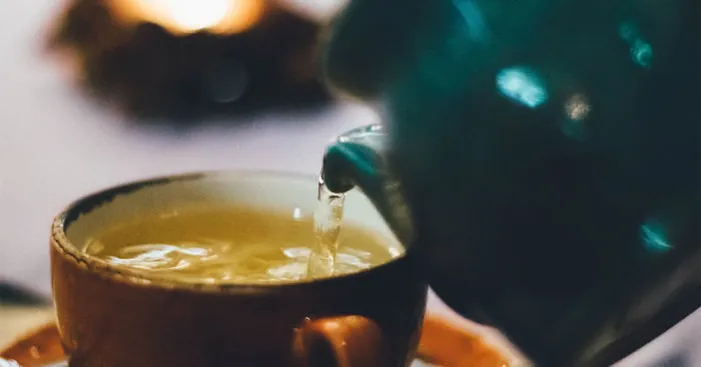Table of Contents
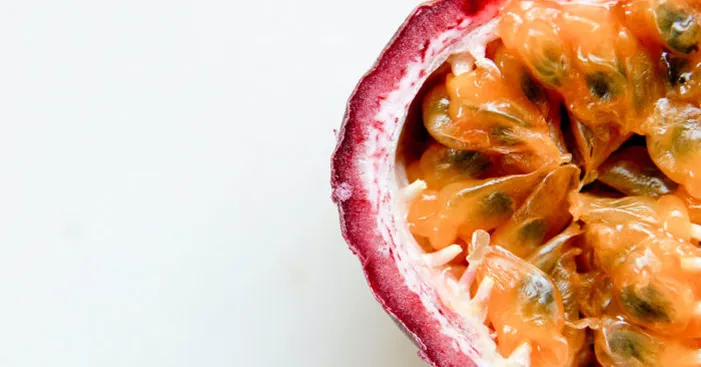
Lilikoi fruit is rich in vitamins and minerals which makes it one of the most beneficial fruits.
Like any other food, this fruit may have some side effects mostly related to allergic reactions.
:
In this article, we gathered all the information you need to know about the lilikoi fruit health benefits, nutritional values, possible side effects, alongside tips on how to buy + consume + store it.
But before we start, what is a ‘lilikoi fruit” ?!
Lilikoi fruit: overview
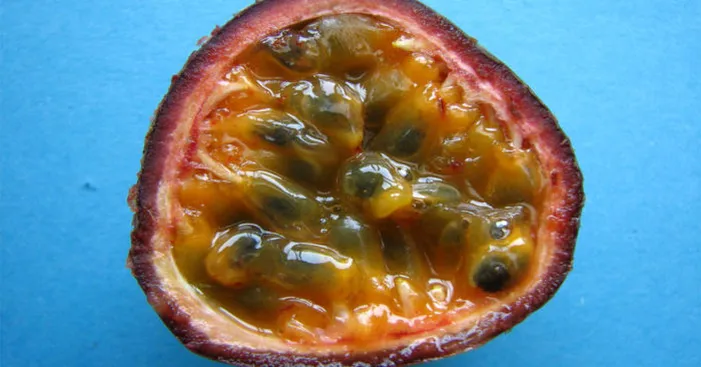
Lilikoi is the name of the fruit in Hawaiian and it is more known as “passion fruit” or “granadilla” in the United States.
This fruit comes in an oval round shape that resembles berries with a diameter of 2 to 4 inches (5 to 10cm).
The outer shell of the lilikoi fruit is hard and not suitable for consumption as it is very bitter.
On the other hand, that hard shell is covering a very sweet yellow pulp on the inside full of fragrance and small black seeds.
In addition, it comes in over 200 varieties depending on the environment where they’re grown.
Lilikoi fruit can be yellow or orange which are more common in Latin America and it can also be purple in hotter regions like Africa.
This fruit gained its name from the passion flower which was named in reference to the passion of Christ as the flower’s shape resembles the crucifixion of Christ.
Historically, the fruit has been growing for thousands of years but the first record was mentioned in the 16th century after the Spanish conquest of Brazil.
From there, the lilikoi fruit was taken to Europe and from there it spread globally thanks to its unique taste and medicinal properties.
Nowadays, Brazil is the number one producer of lilikoi fruit worldwide but it is also grown in Asia, Africa, South America, and Australia.
Different varieties of the lilikoi fruit:

There are different species that belong to the passion fruit family and can be called “lilikoi fruit” the main ones are:
Purple lilikoi (Passiflora edulis):
The stems of this plant reach more than 160 feet (50m) long and produce small and round fruits 4 inches (10cm) in length and 2 inches (6cm ) in diameter.
The purple lilikoi comes with a fragrant dark yellow pulp that makes ½ of the fruit’s weight.
These species of purple lilikoi are native to Brazil, Paraguay, and Argentina and have good cold resistance.
The yellow lilikoi (Passiflora edulis flavicarpa):
The fruits of this genus are more vigorous than their purple cousins and come in a round to oval shape with smooth yellow skin.
The size of the yellow type is larger than the purple ones with a length of 4.7 inches (12cm) and a diameter of 3 inches (8cm).
Just like you would expect them, yellow lilikoi fruits are slightly more acidic and less fragrant with an orange-yellow pulp.
These species originated in the Amazon region as a cross between sweet granadilla (Passiflora ligularis) and purple lilikoi (passiflora edulis).
Mountain lilikoi / Sweet granadilla (Passiflora ligularis):
Sweet lilikoi comes generally in the shape of eggs (round oval) and measures about 3.5 inches (9cm) long and 3 inches in width (8cm).
This lilikoi genus is not a cross and is naturally grown in countries like Mexico, Venezuela, and Bolivia.
The outer skin of the sweet granadilla is orange-brownish with a light grey pulp that has a perfect aromatic to acidic flavor ratio that screams freshness.
The barbadine lilikoi / Giant granadilla (Passiflora quadrangularis):
This is a less common type as it has a different shape and color than the rest of the Passiflora genus.
For instance, a giant granadilla comes with greenish outer skin and measures about 11 inches (30cm) long and 7 inches (18cm) in diameter.
Because of those big dimensions, an average Barbadian lilikoi weighs about 7 lbs (3Kg).
The pulp of this lilikoi is white to orange and has a sweet and sour flavor that is less rich than the other species of the Passiflora genus.
The curuba (Passiflora Mollissima):
This is definitely the most uncommon lilikoi type mostly because they look like a big orange date or a small plantain banana.
In fact, the length of curuba lilikoi is about 4 inches (10cm) long and 1.5 inches (4cm) in diameter with rounded ends on both sides.
The skin of the curuba is orange to yellow and is generally thin and has a leather-like texture.
As for the pulp of the curuba, it makes about 60% of the fruit’s weight and has a salmon pink to orange color with a sweet and not too acidic flavor.
The nutritional values and health benefits of the lilikoi fruit:
Nutritional values:
This data counts for a serving of 4 raw lilikoi fruits (granadilla) (72g without refuse):

- Calorie: 70
- Protein: 1.6 g
- Carbs: 17 g
- Fat: 0.5 g
- Fiber: 7.5 g
- Sugars: 8.1 g
- Vitamin A: 5%
- Vitamin C: 24%
- Vitamin B2: 7%
- Vitamin B3: 7%
- Vitamin B6: 4 %
- Calcium: 1%
- Copper: 7%
- Iron: 6%
- Magnesium: 5%
- Phosphorus: 4%
- Potassium: 5%
Health benefits:
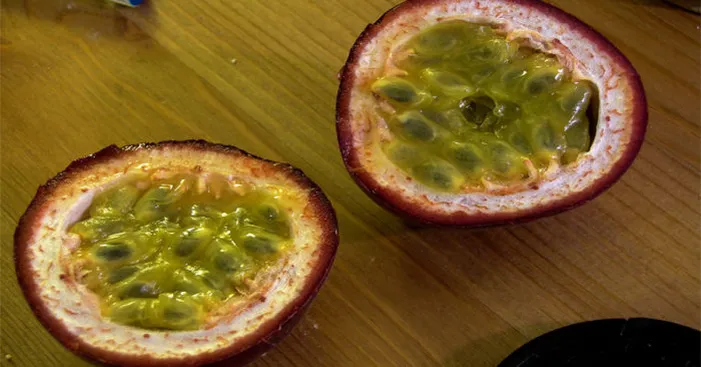
Full of natural antioxidants:
Lilikoi contains an abundance of plant-based components that have strong antioxidant powers.
For instance, it is a good source of carotenoids, polyphenols, and other plant compounds that protects the body from the effect of oxidative stress.
Some researches prove that lilikoi is one of the richest tropical fruits in polyphenols antioxidants.
With such antioxidant properties, this fruit helps the body fight free radicals which are the source of many diseases.
Also, offers vitamin C (24% of the RDI) and A (5% of the RDI) which are two powerful antioxidants essential to slow down the effect of aging.
By reducing the harmful effect of free radicals on the DNA, the antioxidants in lilikoi protect the cells from dying and slow down the aging process.
As for the polyphenols content, they all have good anti-inflammatory qualities which help reduce the risk of chronic inflammation.
Supports bones health:
Lilikoi fruit is a source of many minerals that are essential to maintaining bone health.
For instance, it contains calcium which is essential to have a healthy bone density and reduces the risk of bone breakage.
Another mineral that the lilikoi fruit offers is magnesium which increases the absorption of calcium and therefore helps strengthen the bones.
In addition, this fruit offers phosphorus which stimulates the proper growth of bones.
As for the antioxidant properties of lilikoi, it ensures that bone tissues are resilient and less vulnerable to degenerative bone disease.
These same antioxidants will combat inflammation that may appear in the joints, therefore, reducing the swelling and pain caused by arthritis.
For good skin and hair:
Lilikoi contains a lot of nutrients essential to having good hair and skin.
In fact, beta-carotene and vitamin A in this fruit promote hair growth and maintain healthy skin free from acne and well protected against UV radiation.
Nonetheless, vitamin C is the nutrient that has the most impact on the skin and hair.
Once it gets into the body, vitamin C acts as an essential coenzyme in the process of creating collagen.
Collagen is by far the most abundant and important structural protein in the body as it is essential for all of the body tissues.
A body that has enough collagen usually has more flexible hair which makes it less vulnerable to breakage.
In addition, with enough collagen, the skin is more firm, healthy, and free of aging signs and wrinkles.
Also, the antioxidants in lilikoi fruit combat inflammation of the skin, therefore, lowering the appearance of scars.
As for the potassium content in lilikoi, it improves blood circulation and therefore promotes better nutrition for both the skin and hair.
Regulates the glycemic index:
A serving of 4 lilikoi fruits offers more than 30% of the daily needs in fibers and that helps regulate the glycemic index.
In fact, once fibers reach the stomach and combine with water they turn into a gel form which causes a delay in the digestive process.
As a result, the absorption of nutrients takes more time including the absorption of glucose.
The delay of glucose absorption help prevent the spikes in blood sugar levels but rather supply the body with controlled levels over time.
This is very beneficial, especially for those who already suffer from type 2 diabetes or metabolic syndromes.
In addition, lilikoi fruit has a low glycemic index which makes it a good natural ally for diabetic patients.
Some studies confirm that regular consumption of lilikoi fruit can improve insulin sensitivity.
Contributes to heart health
Consuming lilikoi regularly can maintain the optimal functioning of the heart.
This is because the rich antioxidant properties of this fruit protect the cardiovascular system from free radicals.
In addition, lilikoi has a very limited amount of sodium and up to 5% of the daily need in potassium per just a serving of 4 fruits.
That ratio of sodium and potassium is very excellent for controlling blood pressure.
For instance, potassium is a vasodilator as it dilates the vessels and allows them to manage and lower blood pressure, therefore, slowing the heart rate.
Also, the good amount of fibers increases bowel movement which means less bad cholesterol (LDL) is being absorbed during the digestion process.
Other health benefits of lilikoi:
- Protects the heart and the arteries.
- Strengthens the immune system.
- Eliminates toxins.
- Reduces the risk of cancer.
- Lowers blood pressure.
- Reduces bad cholesterol.
- Slows down the aging process.
- Facilitates digestion.
- Promotes healthy eyes.
- Reduces the risk of anemia.
Consuming lilikoi fruit:

The most common way to consume this fruit is by cutting it in half and eating the gelatinous pulp using a spoon.
Sometimes the seeds may be large and disturbing so feel free to remove them.
The lilikoi fruit is relatively sweet therefore it combines well with several recipes including smoothies, jams, syrups, cocktails…
Also, since the pulp of lilikoi is quite unique you can use it to decorate tarts and cakes.
You can add it to yogurt, cheese, desserts, your fruit salad, or even some savory dishes
Even though the lilikoi is mostly used in sweet dishes some people like to use it for savory dishes like sauces, and marinades for meat or fish.
There are other traditional uses for this fruit including making tea from the dried and crushed leaves of the lilikoi plant (passion plant).
Lilikoi fruit tea:
Lilikoi tea or passion fruit tea is made of the dried leaves of the passion plant and is used as a treatment for insomnia and anxiety.
Ingredients:
- 1 tsp of dried lilikoi plant leaves.
- ½ cup of boiling water.
Preparation:
- Using a cup, put the dried plant leaves in and then pour boiling water on them.
- Cover the cup and let it rest for 10 minutes then strain before you drink.
- Drink this tea 3 to 4 times a day and you will experience noticeable relief from anxiety and insomnia.
Sweet lilikoi foam:
Ingredients:
- 5 lilikoi fruits.
- ½ cup of liquid cream.
- 2 gelatin leaves.
- 1tbsp of water.
- 4 tbsp of sugar.
- 2 eggs.
Preparation:
- Soak the gelatin sheets in a bowl of cold water and let the rest for a couple of minutes.
- Now cut the lilikoi fruits in half then empty their pulp in a pan using a spoon.
- Add 2 tbsp of sugar and 1 tbsp of water, and 2 egg yolks, and cook the ingredients on very low heat for 2 minutes while stirring.
- Using a blender or a spoon, beat the remaining egg white with 1 tbsp of sugar then start introducing the lilikoi fruit sauce cooked earlier while blending.
- Now pour the lilikoi foam into molds of your choice then place them in the fridge for at least 4 hours to enjoy it later with your loved ones!
Precautions Before you consume lilikoi:

Lilikoi like any other type of food can have some side effects that we need to be aware of.
For instance, the calming effect of this fruit on the nerve system can cause drowsiness for some people, especially in the case of over-consumption.
Also, because of that calming effect, it is not recommended to operate machinery or drive vehicles after eating lilikoi.
This fruit can also lower blood pressure and people with low blood pressure should avoid consuming it without their doctor’s prescription.
In addition, there are no studies that confirm the safety of consuming the lilikoi fruit during pregnancy or when breastfeeding nor for kids under 12.
People should only consume the lilikoi fruit when it’s ripe because that’s when the fruit loses cyanogens and alkaloids, two toxic components.
Some people could experience an allergic reaction when they consume the lilikoi fruit because of its latex or pollen content.
The allergic reaction to this fruit can range from mild itching to hives and coughing.
As for its nutritional composition, the lilikoi fruit can cause some gastrointestinal problems like diarrhea because of its high fiber content.
In addition, people who are about to have surgery should avoid eating lilikoi as it may stimulate the nervous system and interfere with anesthesia.
Storing lilikoi fruit:
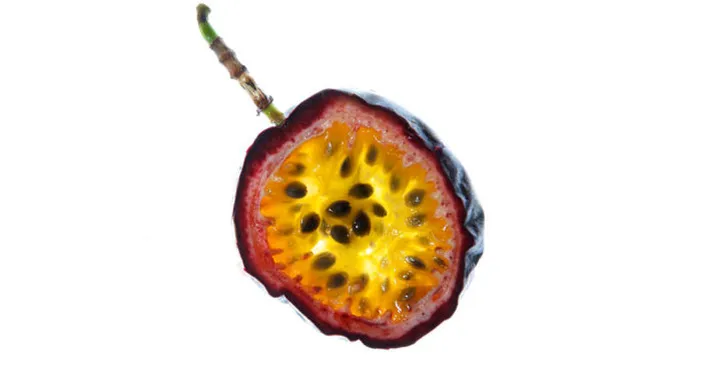
Just like avocadoes, this fruit must be kept at room temperature so that it ripens and that’s when its flavor is more soft and fragrant.
Nonetheless, if you happen to buy a lilikoi fruit that still has some green color, it is best to wrap it in a newspaper or a paper bag and keep them at room temperature for 3 to 4 days.
This is because this fruit ripens after harvesting and that way it will continue its ripening process.
Once they are ripe, the skin becomes more wrinkly as it loses some of its water content, which you can then store in the fridge for a week.
In addition, you can freeze ripe lilikoi fruit as a whole or just the pulp for a couple of months and it will remain fresh.
Buying lilikoi fruit:

The passion fruit has a smooth skin that begins to wrinkle as soon as you take it back home because it is losing some of its moisture.
Lilikoi fruits that are already wrinkly means they are ripe and need to be consumed as soon as possible.
The best tip to buy a good quality lilikoi fruit is to pay attention to the color of the skin.
If any part of the skin has some green color it indicates that the fruit is underripe.
Also, if the outer skin has dark spots it is mostly a sign that the fruit is rancid on the inside and won’t taste good.
A good lilikoi should weigh about 2 ounces (50g) which means that it has a good pulp inside.

